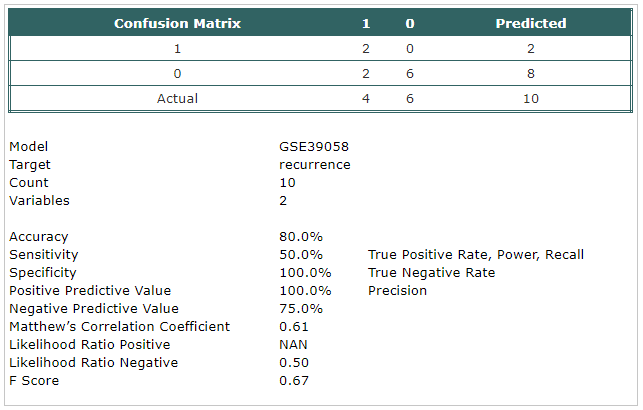GSE39058
|
| What
We Learned |
- Osteosarcoma is the most common primary bone malignancy,
disproportionally affecting children and young adults.
- Overall five-year survival rates for newly diagnosed
osteosarcomas range from 40% to 75%.
- Standard treatment consists of two to three rounds of chemotherapy,
followed by definitive resection, and additional adjuvant chemotherapy.
- Patients whose tumors show high levels of necrosis
following preoperative chemotherapy have a uniformly good prognosis (up to 90% cure rates)
whereas those with lower levels of necrosis have variable outcomes.
|
- Combined miRNA and mRNA analysis supports a possible role
of the 14q32 locus in osteosarcoma progression and outcome.
This study creates a paradigm for formalin-fixed, paraffin-embedded-based miRNA biomarker studies in cancer.
|
- Prognostic miRNA signatures with high discriminatory
capacity have been discovered, independent of and potentially synergistic with traditional chemoresponse
assessment, and provided new insights into the molecular networks associated with response and exposure to chemotherapy.
|
|
| What
We Did |
- A classification model has been built to
predict recurrence using Trainset.
The selected probes were:
- hsa-mir-335*
- hsa-mir-141*
|
- The model has been tested using Testset.
|
 |
|

